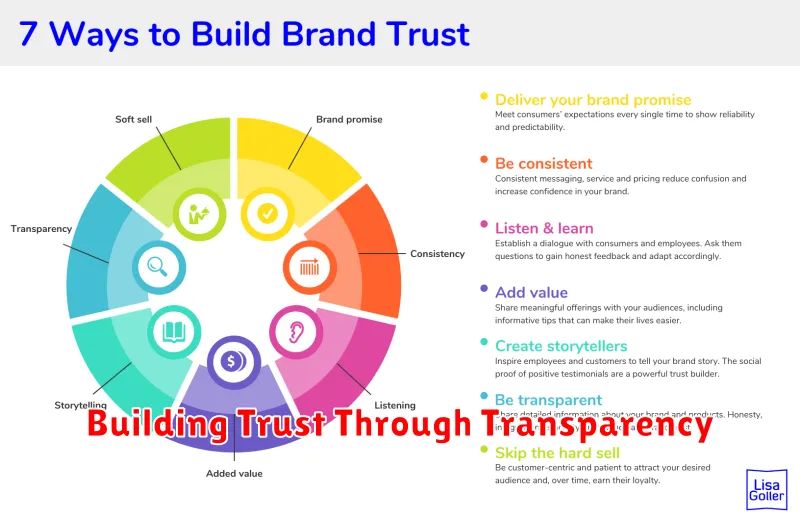In today’s digitally-driven world, establishing a strong brand identity is paramount to success. A cohesive and impactful brand presence across various digital channels not only fosters recognition but also cultivates trust and loyalty among your target audience. This involves strategically crafting a consistent brand voice, visual aesthetic, and messaging that resonates with your values and effectively communicates your unique selling proposition. Creating a strong brand identity requires careful consideration of elements such as your logo, color palette, typography, imagery, and overall online persona. This meticulous approach is essential for cutting through the digital noise and making a lasting impression on potential customers.
This article will delve into the key strategies and best practices for building and maintaining a strong brand identity across your digital channels. We will explore how to effectively leverage platforms like social media, websites, email marketing, and other online touchpoints to create a unified and memorable brand experience. Learn how to tailor your content and messaging to each specific platform while ensuring consistency with your overall brand identity. Discover how to conduct thorough audience research, develop a comprehensive brand style guide, and measure the effectiveness of your digital branding efforts. By implementing these strategies, you can establish a powerful online presence that drives engagement, strengthens customer relationships, and ultimately contributes to the growth of your business.
Defining Your Brand Voice
Your brand voice is the personality and emotion infused into all your communications. It’s how you speak to your audience and how they perceive your brand. A well-defined brand voice fosters consistency across all digital platforms, building a cohesive and recognizable brand identity.
Consider key characteristics that embody your brand. Are you sophisticated, playful, authoritative, or friendly? Document these traits to ensure consistent application.
Key elements of your brand voice include:
- Tone: The overall feeling conveyed (e.g., formal, informal, humorous).
- Language: The specific words and phrases used.
- Purpose: The underlying message communicated.
By clearly defining your brand voice, you can ensure that every interaction a customer has with your brand reinforces the same message and strengthens their connection.
Choosing Consistent Visual Elements

Visual consistency is paramount in establishing a strong brand identity. Maintaining uniform visual elements across all digital platforms reinforces brand recognition and builds trust with your audience.
Key visual elements to consider include:
- Logo: Ensure your logo appears consistently in size, color, and placement across all platforms.
- Color Palette: Adhere to a defined color palette for all branding materials, from website backgrounds to social media graphics.
- Typography: Select a limited set of fonts and use them consistently for headings, body text, and call-to-actions.
- Imagery: Maintain a consistent style and quality of imagery. Whether you opt for photography or illustrations, ensure a cohesive visual aesthetic.
By maintaining consistency in these elements, you create a cohesive and memorable brand experience for your audience, strengthening brand recognition and fostering loyalty.
Aligning Messaging Across Platforms
Consistent messaging is crucial for building a strong brand identity. Maintaining a unified voice and message across all digital platforms ensures your brand is easily recognizable and fosters trust with your audience.
This involves carefully considering how your core message translates across different platforms. While the specific content may be tailored for each platform (e.g., short-form for Twitter, longer-form for blog posts), the underlying message should remain the same.
Key elements to consider include your brand voice, value proposition, and target audience. Ensure these elements are consistent across all channels, from social media to your website to email marketing.
A style guide can be an invaluable tool for maintaining consistency. This document should outline key messaging points, preferred terminology, and brand voice guidelines.
Building Trust Through Transparency

In the digital age, transparency is paramount to building a strong brand identity and fostering trust with your audience. Open communication and honest practices demonstrate your brand’s integrity and build credibility.
Transparency involves clearly communicating your brand’s values, mission, and processes. This includes being upfront about pricing, data usage policies, and any potential conflicts of interest. By providing readily accessible information, you empower consumers to make informed decisions and build confidence in your brand.
Actively addressing customer concerns and feedback, both positive and negative, is another key aspect of transparency. This shows that you value their input and are committed to continuous improvement.
Using Storytelling for Emotional Impact
In the digital landscape, establishing a strong brand identity requires more than just a visually appealing logo and consistent color palette. It demands forging a genuine connection with your audience. Storytelling offers a powerful mechanism to achieve this, enabling brands to transcend transactional interactions and cultivate meaningful relationships.
By crafting narratives that resonate with your target audience’s values and aspirations, you can evoke emotional responses that foster brand loyalty and advocacy. Stories humanize your brand, making it relatable and memorable. Instead of simply highlighting product features, storytelling showcases the benefits and the impact your brand has on people’s lives.
Consider weaving narratives around customer success stories, showcasing how your product or service solved a problem or fulfilled a need. Alternatively, share the story of your brand’s origin, highlighting its mission and values. This transparency builds trust and strengthens the emotional bond with your audience.
Tracking Brand Perception Online

Monitoring your brand’s online presence is crucial for understanding public sentiment and protecting your brand reputation. This involves actively tracking mentions across various platforms, including social media, review sites, forums, and news articles.
Utilize social listening tools to gather data on brand mentions, analyze sentiment (positive, negative, neutral), and identify emerging trends. This data provides valuable insights into how your audience perceives your brand, its strengths, and areas for improvement.
Key metrics to track include:
- Volume of mentions: How often is your brand being discussed?
- Sentiment analysis: What is the overall tone of the conversation?
- Reach: How far are conversations about your brand spreading?
- Share of voice: How does your brand’s visibility compare to competitors?
By consistently tracking brand perception, you can proactively address negative feedback, identify potential crises, and adapt your strategies to better align with audience expectations.
Evolving Your Brand Without Losing Core Values
In today’s dynamic digital landscape, brands must adapt to stay relevant. This evolution, however, needs careful consideration to avoid diluting core values. Maintaining a strong brand identity requires balancing change with consistency.
Identify your core values. What principles are non-negotiable? Understanding these foundational elements provides a framework for future growth. Consider what makes your brand unique and what your customers value most.
Embrace gradual change. Avoid drastic shifts in brand messaging or visuals. Incremental updates allow your audience to adapt alongside your brand. This approach helps maintain recognition while introducing fresh perspectives.
Communicate transparently. When implementing changes, explain the rationale to your audience. Highlighting the connection between the evolution and your core values builds trust and understanding. This open communication reinforces your commitment to your brand’s principles.

